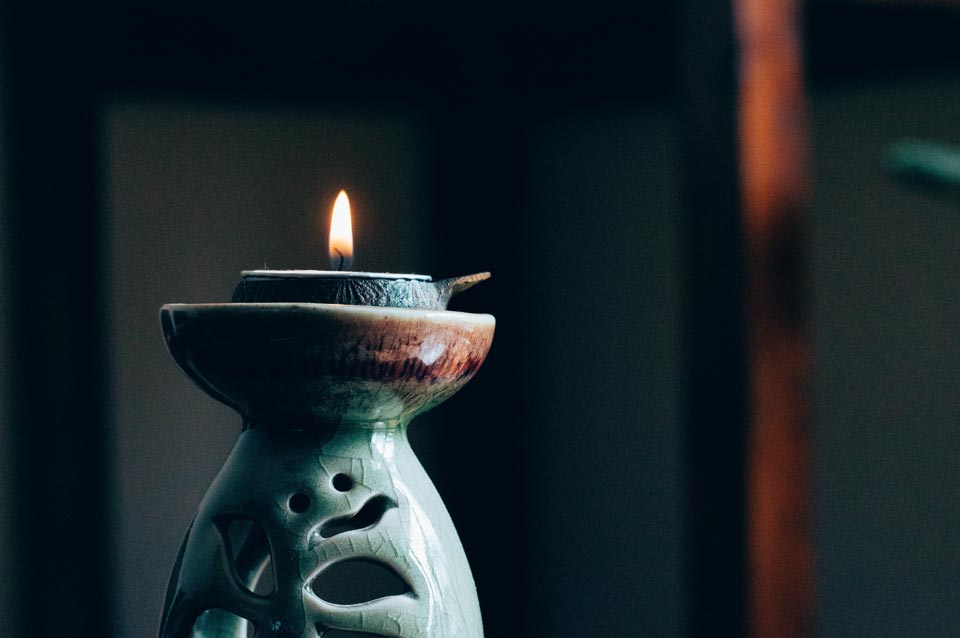Tantra is a wide range of practices and traditions in Hinduism and Buddhism, often associated with unconventional rituals.
Tantra may include any of the following practices: meditation, visualization, mantra repetition, breath exercises (pranayama), sexual yoga, ritual worship (puja), yoga asana practice, use of mudras (hand gestures), recitation (kriya), drawing mandalas and other artwork for meditation, and chanting various sounds to induce altered states of consciousness.
Tantra is also associated with the occult sciences such as astrology.
Table of contents:
- Meaning Of the Word Tantra
- History of Tantra
- The central aim of Tantra
- Tantric Sex Is Not About Sex!
- Tantra Allows You to Control Emotions
- Tantra Sex and the Soul
- The Diversity in Beliefs of Tantric Practice
- Myths about Tantric Sex


Meaning Of the Word Tantra
Tantra is a Sanskrit word meaning “loom or weave”. It is a term used to describe a wide range of practices and traditions. In Hinduism, it refers to the act of weaving together (tantram) or sewing together (“sutra”) two or more strands (yoga).
The tantra teachings developed in India from around 500 BC until around 1200 AD. Tantric texts were written down starting in about 900 AD.
Some scholars believe that Tantra originated as a branch of Shaktism linked with various goddesses; however, this theory has been contested by other scholars who believe it descended from Vedic tradition as an alternative form for achieving moksha (enlightenment).


History of Tantra
It’s not surprising that Tantra has been practiced for over 5,000 years. It was first developed in India and was influenced by Hinduism and Buddhism.
Tantra is a spiritual practice that aims to bring about enlightenment when your soul breaks free of the illusion of being separated from God.
To achieve this, it teaches that you must treat your body as a temple and focus on achieving a state of balance between two opposing forces: male energy (yang) and female energy (yin).


The central aim of Tantra
In the west, we hear about Buddhism and Tantra as two separate things: one is an Eastern spiritual philosophy, and the other is a sexual practice. But in truth, they’re not separate at all.
Tantric Buddhism is a form of Buddhism that originated in India in the sixth century CE. The central aim of Tantric Buddhism is to help practitioners break the cycle of rebirth (samsara).
To do this, they must gain insight into their true nature — the nature of reality itself — and overcome suffering through self-awareness.
In simpler words, Tantra is an ancient spiritual path involving carefully controlled lovemaking rituals. Tantric sexual practice is about increasing your pleasure and slowing down the process to allow for deeper levels of intimacy.
It’s not just about having orgasms, though: it’s a way to experience love and connection on a whole new level.
Tantra can be used as a path to enlightenment and healthy lifestyle practice. The goal is to promote physical well-being, mental stability, and spiritual growth through the body’s energy channels (also known as Nadis).
This helps us connect with our true selves while maintaining a balance between mind, body, and spirit–which can have amazing benefits when applied in everyday life!


Tantric Sex Is Not About Sex!
This may seem confusing for some but let me take a few seconds to explain.
Tantra is not about sex. It’s about spiritual enlightenment. Sex is just one of the many tools that can help you on your journey to achieving self-realization.
If you’re single and want to learn tantric practices but don’t have a partner, no problem! Tantric sex doesn’t require two people—you can do a lot by yourself and still experience the benefits of sexual energy management.
If you’re in a relationship and have a partner who doesn’t want tantric sex because they think it’s weird or “weird” (a word that should never be used to describe anything), I encourage you to reconsider their response.
Try explaining what tantra means to your partner and ask them if they’d be willing to try something new together once in their lives!
The purpose of the practice is to reach a spiritual climax, called “samadhi”. Samadhi is the state of being where the male and female energies come together in one’s body. Tantra says that when this happens, a person becomes whole and balanced in mind, body, and spirit.
Visualization
Visualization is used as a meditative practice in Tantra. Visualization is a way to transform consciousness, attain enlightenment, and achieve a state of bliss. In this way, it has been described as the most effective method for achieving nirvana in Buddhism.
Visualizing something is creating an image in your mind of what you want or need. The following are some examples of visualizations:
• Visualizing yourself on the beach after your vacation ends
• Visualizing yourself eating an entire pizza when you’re feeling hungry
This is a simpler approach to understanding Tantra. It goes much deeper and can change your life in ways you can never expect.


Tantra Allows You to Control Emotions
Tantra is a way of life. You should practice Tantric sex with your partner, but if you’re not married or in a committed relationship, it may be difficult to find someone willing to go through the process with you. If this is the case, don’t worry! Your best bet is to start by controlling your own emotions.
When talking about Tantric sex and meditation techniques, we often think: “This will help me control my emotions!” But what do we mean when we say “emotion”? And how can we control them?
First, let’s get rid of some misconceptions about what emotions are: We think that our feelings come from our brain and body—from how things make us feel emotional (as if they were separate from us).
This leads us down two paths: Either we try to “control” how something makes us feel based on its rational value (e.g., saying, “I shouldn’t feel anxiety because it won’t help me achieve my goals”), or else we try and force ourselves not to feel anything at all (which isn’t possible).
Both approaches ignore something important: Feelings aren’t just physical responses; they come from within each person individually.


Tantra Sex and the Soul
Tantra is a spiritual practice that focuses on self-realization. Self-realization can happen through the mind, body, heart, and spirit. The Tantric sex experience takes you through all of these channels to get in touch with yourself and your partner more deeply than ever before.
As we’ve discussed above, there are many different ways to approach tantric sex—from meditative visualizations to breathing techniques to kundalini energy work—but at the core of any good practice is the idea that we should be aware of ourselves as much as possible during our sexual experiences.
If we do this well enough during our first few encounters with someone new (or old!), then it will become easier for us throughout life as well; by focusing on ourselves first instead of worrying about whether or not our partner is enjoying themselves too much or too little (or anything else!), we’re able to learn more about who they are while still allowing them space to express themselves freely without fear of judgment from others around them!
External vs. Internal Tantra
In some forms of tantra, the deity may be imagined as being located outside the practitioner’s body—not within it. This differs from other forms of tantra, where the deity is imagined to be located within one’s body (which thus falls under what I call “internal” tantra).
In these external systems, you might imagine a deity standing before you or above you. You do not visualize yourself as being that deity; instead, you imagine a third party between yourself and the godhead—acting as an intermediary between yourself and another person or being.
You might also practice with such an external deity by imagining yourself as part of a larger group of people that all worship together in unison at certain times throughout each day (such as after breakfast) or week (such as every Monday night).


The Diversity in Beliefs of Tantric Practice
Tantra, a Sanskrit word meaning “weave”, refers to a wide range of practices and traditions in Hinduism and Buddhism. It is used as a blanket term for the spiritual traditions which emerged around the 7th-century C.E., but its usage is not limited to these two religions.
Tantra has no specific set of beliefs or rules; it’s an umbrella term covering all teachings that emphasize direct experience with divine reality through inner work (i.e., meditation) or ritual action (i.e., worship).
Many people equate tantric sex with tantric spirituality; however, this isn’t always accurate because one doesn’t necessarily lead to another!
In yoga practice, for example, there are many different types of yoga classes available — including Bikram Yoga (hot), Vinyasa Flow (flowing), Ashtanga (power), and Iyengar (stability).
The same goes for tantric sex: there are different ways to incorporate this practice into your life—and some may not appeal to you at all!


Tantra Allows People to Achieve Universal Consciousness
Although Tantra and Tantric sex may be translated into many different things, there is one thing that does not change: the purpose.
Tantra is an ancient spiritual practice that has been practiced for thousands of years. The central theme of Tantra is to achieve enlightenment by experiencing the divine energy and becoming one with it.
All scholars and experts agree on this theme. No matter the path they choose to perform, the goal is the same.
They envision themselves merging with the gods or the universal consciousness during the process. It’s all about letting go of your ego and realizing that you are part of something greater than yourself.


Myths about Tantric Sex
Before I end this article, I would like to clarify some myths about Tantra and Tantric sex. Although there are not many myths about it, the popular one is that it is a cult.
Tantra is not a cult. It does not require you to give up your money or possessions, nor does it demand that you worship any particular deity or follow any particular set of beliefs. Many yogis who practice tantric sex are atheists.
They practice tantric sex as part of their spiritual path—but they don’t have to believe in God or ghosts or anything like that! There are no set rules which rule out the option of it being a cult.
Conclusion
As you can see, tantra is much more than the slow, mindful sex that it’s often reduced to. Tantra practice is about being present with your partner and connecting through touch, sensuality, and even breath.
If you’re looking for a way to slow down your day-to-day life and connect more deeply with yourself and your loved ones, this could be a wonderful option.
If you are keen into Tantric Sex, you may be interested in the next articles:
